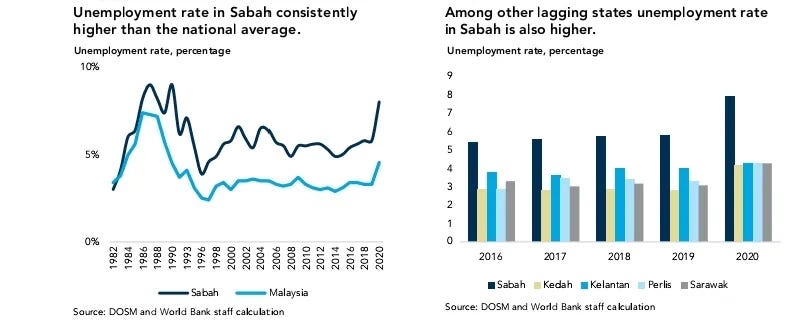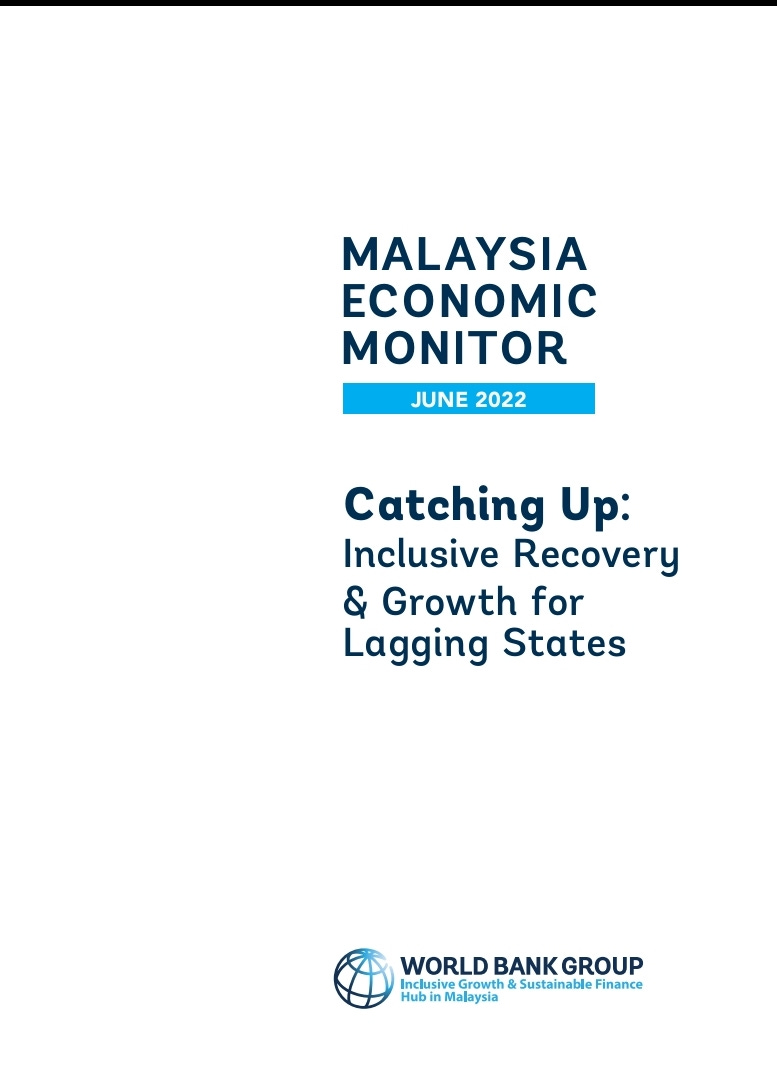Of the many important economic development issues confronting the country, besides the existing inflation, and specter of a stagflation, is the existence of youth unemployment.
1] Youth unemployment has remained high and unchanged since the last quarter of 2022 at 11.1 percent. Although in the 35-44 years age cohort, the unemployment rate was down to 1.6 percent in Q1 2022 (Q4 2021: 2 percent), it is the size of the 15-24 age populated sector that is of concern:
Consistently, this segment of youth unemployment percentage is well above the national average of 4%.
2] In a survey on the country's labour force that was compiled by the Malaysian Productivity Corporation (MPC) as the official partner for the World Economic Forum's 2019 Global Competitiveness Report, it is found that 72.1% of Sijil Pelajaran Malaysia (SPM) graduates do not want to continue their studies after secondary school. According to Utusan Malaysia, a report by the Department of Statistics Malaysia (DOSM) in 2019 showed that 390,000 out of 560,000 SPM candidates were interested in joining the workforce immediately after the exam, while only 170,000 students were interested in continuing their studies.
3] Compounding this “not seeking employment” phenomenal, the Ministry of Higher Education (MOHE) had once indicated that 75,000 out of 300,000 fresh graduates are expected to be unemployed due to the economic downturn caused by the COVID-19 pandemic. Higher Education Minister Datuk Seri Noraini Ahmad’s estimation was based on 2019 unemployment figures among fresh graduates.
According to her, 41,161 out of 330,557 graduates from that year were then unemployed. With that addition of 75,000 in 2020, the total unemployment among the group will add up to a high 116,161 graduates who were still being unemployed.
Noraini added that the unemployment rate among fresh graduates in 2020 was projected to be at 25%. In comparison to year 2019 it was a jump from 13.8%. If 116,161 graduates were unemployed, then they would constitute 30% of of all graduates accumulated from colleges and universities during 2019/2020 alone; also, one out of 5 of these unemployed graduates would be degree holders. These graduates would make up overall 55% of those who were unemployed as by August 2020 then.
4] The main factors behind why those aged 17 and 18 did not want to continue their studies were:
- The availability of job opportunities in the gig economy,
- Interest in becoming influencers on social media, and
- Believing that furthering their studies do not guarantee better jobs.
The findings were worrying because the high percentage of students that were not interested in furthering their studies after SPM will have an impact on the country's productivity, especially when job opportunities are not filled by local youth.
That survey also found that a worrying 5.8% of Malaysians have never attended or completed school consisting of individuals from poor families, the Orang Asli community, and predominantly, they are in Sabah and Sarawak, (World Bank, Monitor Economic Malaysia, June 2022 Report).
The ramification is that there shall be many low-skill workers in the workforce which will cause a decrease in the nation's productivity, innovation, and competitiveness.
According to the World Bank’s Human Capital Index (HCI) - that measures which countries are best in mobilizing the economic and professional potential of its citizens - Malaysia ranks 55th out of 157 countries (worldwide, Singapore has the highest HCI followed by Hong Kong, Japan and south Korea).
To fully realize its human potential and fulfil the country’s aspiration of achieving the high-income and developed country status, Malaysia will need to advance further in education, health and nutrition, and social protection outcomes, otherwise the wage disparity with competitive nations in Asia will be sharpened.
In a circular circuitry of a capital-domain economy, this unacceptable situation will cause much difficulties in creating new job opportunities and will have an impact on low-wage workers that shall, on a long-term, drag on the growth of income which has slowed much since the Asian Financial Crisis (AFC 1998)
5] Despite the “economic development” in the last 65 years since unloaded from the yoke of colonial rule, and that the national income is grading higher:
the disparity between the wealthy rich and the underemployed poverty poors is still glaring distinctive. Bumiputera in the top income groups (the top 1 per cent and the 10 per cent) had benefitted the most from the economic development in the country during the 21st century:
6] Further, The UNICEF 2020 Report has shown that low income female-headed households are exceptionally vulnerable and helpless.
This is also partly because the country’s female workforce has one of the lowest participations in Southeast Asia, too:
7] The present effort towards full employment for our young generation is constrained by the limited distribution in the national budgetary allocation to the socio-economic sector compared to the admirable case environment in the 1970s. The nation is also continuously in debts with little fiscal means to elevate the designated growth as advocated. Consistently, we have been overspending - even when economic conditions were perfectly accomodating - in a deficit fiscal mode (Sudhave 2020):
In short, since the previous World Bank Report on Malaysia, March 2021 which indicated growth was not only slower, but inequality is higher and high-skilled jobs make up a lower share of employment compared to other countries that have achieved high-income status in recent decades - there is much executable effort to be exerted.
8] The question to ask is not only where are we as a nation, but what are we doing now because despite years of consultancy and urging by World Bank to aim high and to accelerate high income growth and a faster developmental effort, we are still politico-economic monsoon-stuck in a quarmire because of economic development under capitalism.
The big picture of youth employment is rather dispirit and depressing unless there is a renewal of a socialist model in re-imaging a politico-economic development praxis for a better nation.
Core data - unless where citations are referenced with external links - derived from:











